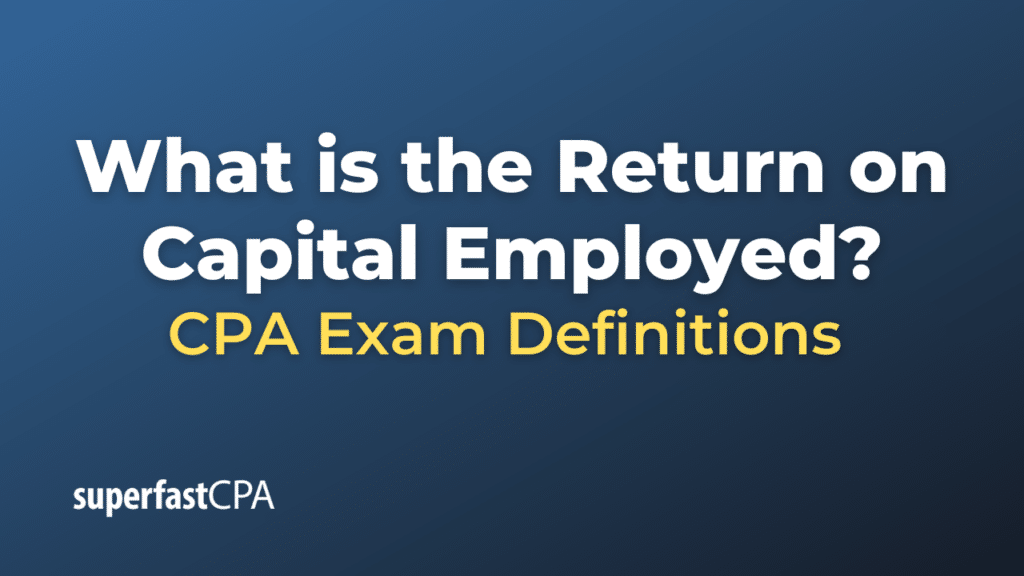Return on Capital Employed
Return on Capital Employed (ROCE) is a financial metric that measures a company’s profitability and the efficiency with which its capital is utilized. In other words, ROCE indicates how effectively a company is using its capital (both equity and debt) to generate profits.
The formula for ROCE is:
ROCE = Earnings Before Interest and Tax (EBIT) / Capital Employed
Where:
- Earnings Before Interest and Tax (EBIT) represents the company’s operational profitability, not accounting for interest and tax expenses.
- Capital Employed can be calculated in several ways, but one common method is:
Capital Employed = Total Assets − Current Liabilities
Another method to calculate capital employed is:
Capital Employed = Shareholder’s Equity + Long-term Debt
Both methods essentially aim to represent the long-term funds used by the company, whether sourced from creditors or owners.
ROCE is expressed as a percentage. A higher ROCE indicates that the company is effectively using its capital to generate profits, while a lower ROCE might suggest inefficiencies in using the capital.
Why is ROCE important?
- Performance Evaluation: ROCE helps assess the efficiency of a company’s operations by comparing its operational profit to the capital it uses.
- Comparative Analysis: Investors and analysts can use ROCE to compare the performance of different companies, especially within the same industry.
- Capital Allocation: Management can use ROCE to make decisions about where to allocate resources for maximum return.
Note: It’s crucial to consider the industry average and the capital structure of the company when interpreting ROCE values. Two companies with the same ROCE might have entirely different levels of risk depending on their capital structures.
Example of the Return on Capital Employed
Let’s illustrate the concept of Return on Capital Employed (ROCE) using a fictional company.
SolarTech Solutions is a company specializing in the production and installation of solar panels. We’ll use data from the year 2023 to compute its ROCE.
Given Data:
- Earnings Before Interest and Tax (EBIT) for 2023: $5 million
- Total Assets at the end of 2023: $30 million
- Current Liabilities at the end of 2023: $10 million
Step 1: Calculate Capital Employed
Using the formula:
Capital Employed = Total Assets − Current Liabilities
Capital Employed = $30 million – $10 million
Capital Employed = $20 million
Step 2: Calculate ROCE
ROCE = EBIT / Capital Employed
ROCE = $5 million / $20 million
ROCE = 0.25
Convert to percentage: 0.25 × 100 = 25
Thus, SolarTech Solutions’ ROCE for 2023 is 25%.
Interpretation:
This means that for every dollar of capital employed (both from shareholders and lenders), SolarTech Solutions generated 25 cents in profit before accounting for interest and taxes in 2023.
A 25% ROCE suggests that the company has been effectively using its capital to generate earnings. However, to get a comprehensive view, one should compare this figure with:
- SolarTech’s ROCE from previous years to understand if there’s an improving or declining trend.
- ROCE of other companies in the solar industry to grasp how SolarTech stands relative to its competitors.
Stakeholders, especially investors, would analyze this metric in-depth to gauge the company’s ability to effectively use its capital, be it equity or borrowed funds.













